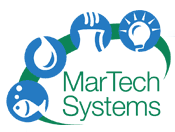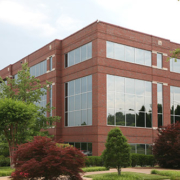New Risks for Commercial Building Managers as Covid-19 Restrictions Ease
Office buildings, “non-essential” stores and malls, some restaurants, university campuses, hotels – there is a long list of buildings that have been idled or had extremely low occupancy for the last month or more. As state governors begin the process to gradually restart the economy and ease restrictions, there are new risks – risks that building managers might not think about.
The obvious risk is infection of occupants by Covid-19 viruses in the indoor airspace and on hard and soft surfaces.
There’s another, less visible risk – waterborne legionella bacteria that has colonized the potable water distribution system and the cooling tower. Doctors have identified the first case of co-infection (Covid-19 and Legionellosis) in an 80-year old Japanese man who had recently traveled on a cruise ship on the Nile River, Egypt; he did not survive.[1] Recent results from a pilot testing program in nursing homes in southern New Jersey (3,700 test results, 16 long-term care facilities) showed an “astonishing” number of asymptomatic staff and residents in long-term care facilities tested positive for COVID-19.[2] Imagine the stress on our health care system if infected-and-asymptomatic persons return to work and contract Legionellosis from the building’s water systems. Luckily, unlike Covid-19, there is no person-to-person infection risk with Legionellosis. The absence of a Covid-19 vaccine, the lack of widespread testing to identify infected-and-asymptomatic persons, or a definitive understanding of immunity in survivors of Covid-19 infections could produce a spike in co-infections.
Like Covid-19, Legionellosis is also a respiratory infection, making it difficult to differentiate between the two illnesses – and determine which of the two very different treatments. The diagnosis depends on the speed of the test: the 5-minute rapid test for Covid-19 is not widely available; the traditional test, like the test method for Legionellosis, requires 2 to 3 days to deliver results. This delay in diagnosis creates a health risk for the patient and increases the legal risks for the building owner.
Another source of risk is the likelihood that organizations will be “short-staffed” as they gradually return to full operation. Many facilities’ support staff and tradespeople are on partial or complete furloughs or lay-offs and/or have staggered schedules to be physically on-site for a small portion of their normal work week. Concerns about a second – or several waves of infections will likely force facility managers to plan for even more gradual increases in staffing. Short-staffing creates risks of not completing the required preparations and additional monitoring of utility and potable water systems to control the population of legionella bacteria.
Building owners can manage the risk of Legionellosis infections from their building water systems by taking a methodical approach to measure the risks and implement corrective action. Equipment that has the highest risks of infecting building occupants are: showers, conditioned air distribution systems and cooling towers.
Potable water is not sterile; at times, very low concentrations of bacteria may be present. And, while potable water has few nutrients for bacteria, in situ corrosion products such as iron or accidental contamination by sediment are nutrients. During times of normal occupancy, these bacteria can grow in stagnant and low-flow areas known as “dead-legs.” During the last several weeks, buildings with low or no occupancy creates ideal conditions for these bacteria to grow inside the entire potable water system.
Cooling towers can create risks for persons outside the building such as the parking lot as well as for persons beyond the property boundaries who downwind of the facility. The low duty cycle for a cooling tower in a building with little or no occupancy, together with a much higher level of nutrients (airborne dust and pollen, insects, water treatment chemicals) creates a perfect environment for bacteria, including the ubiquitous legionella bacteria to grow. In less temperate parts of the northern hemisphere, these restrictions are occurring during the typical period of recommissioning seasonally-idled cooling towers. Recommissioning cooling water systems often require cleaning and careful monitoring to manage bacteria and legionella populations during a “normal seasonal restart.” This year, it’s likely that facility managers will have to manage a broad range of competing demands during an “abnormal seasonal restart.”
What to do to minimize the risks of legionella bacteria as restrictions are eased?
Now, as restrictions begin to ease, building managers should ensure that the operations and maintenance staff:
- Develop a methodical approach to evaluate the risks (e. g. CDC guidance and ASHRAE Standard 188) and
- Create a workplan to safely recommission the building’s water systems (e. g. Water Management Plan).
The Centers for Disease Control (CDC) has provided guidance for building water systems after a prolonged shutdown during the Coronavirus Disease 2019 (COVID-19) event.[3] The cornerstone of this process is a Water Management Plan[4] as codified by the ASHRAE Standard 188: Legionellosis: Risk Management for Building Water Systems.[5]
The CDC recommendations include a training program for supervisory staff and some basic steps for potable water systems such as:
- Ensure that your water heater is operating properly and delivering water to the furthest tap in the system at a minimum temperature of 120° F,
- Flush your water system – both hot and cold water – through all points of use, especially showers, sink faucets and drinking water dispensers, and
- Take special precautions to clean all decorative water features, such as fountains.
If your building has a cooling tower, your water management plan will include an assessment of the risks and creation of a monitoring program. Additional guidance is available from the Cooling Technology Institute’s (CTI’s) newly-released document: “Guideline (GDL) 159 – Practices to Reduce the Risk of Legionellosis from Evaporative Heat Rejection Equipment Systems.[6]” The CTI document provides a data trending methodology that provides a more robust evaluation of the risks and subsequent corrective actions.
Businesses that fail to manage the risk of Legionellosis infections from their potable or cooling water systems as they reopen not only risk serious illness or deaths, they face legal, reputation and economic risks that, added to the losses from the Covid-19 pandemic, could close their business forever.
Want more information about managing the risks in your cooling tower or in your building’s water systems? We’re here to help. Call us (609-865-8151), send us an email (huchler@martechsystems.com), or visit our website https://www.martechsystems.com/.
P. S. Don’t forget to subscribe to our blog (https://www.martechsystems.com/water-talk/).
[1] https://academic.oup.com/jtm/advance-article/doi/10.1093/jtm/taaa053/5820898
[2] https://njchamber.com/covid19
[3] https://www.cdc.gov/coronavirus/2019-ncov/php/building-water-system.html
[4] https://www.cdc.gov/legionella/wmp/toolkit/index.html
[5] https://www.ashrae.org/resources–publications/bookstore/ansi-ashrae-standard-188-2015-legionellosis-risk-management-for-building-water-systems
[6] https://www.coolingtechnology.org/single-post/2020/02/01/CTI-Releases-Comprehensive-Legionellosis-Guideline



